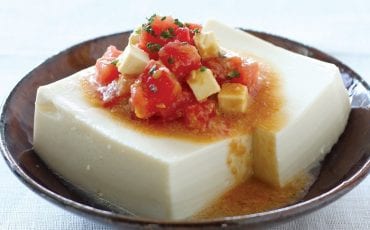- OISHII
- Articles
- Chefs Interview
- Enjoy Yakitori in Singapore
Articles
Chefs Interview
Jul 1, 2014
Enjoy Yakitori in Singapore
Yakitori may be a mainstay in izakayas, and the go-to option for people looking for a quick and easy meal after a long day of work. But in the hands of the right chefs, these meaty morsels are elevated to something quite special.
The introduction of chicken as a staple in the Japanese diet occurred fairly recently. Although chicken farming started to take off during the Edo era (1603 – 1867), chicken was considered a luxury back in the day. Fish was more commonly eaten, and when the Japanese did eat meat, it was more likely to be pheasant, quail cock, goose, and duck, rather than chicken.
The Meiji Restoration brought about a significant overhaul in the Japanese diet. Sukiyaki (Japanese soup or stew) was introduced, and it quickly gained popularity, contributing to the rise of chicken consumption.
Although chicken quickly proved to be a hit, the stallholders who sold skewered items back in the day could not yet afford to buy whole chickens. As a result, they often sold the grilled chicken gristle or offal that high-end restaurants threw out, alongside other kinds of grilled meat. The term “yakitori” specifically refers to grilled chicken, but it soon became an all-encompassing term for any type of grilled meat.
During and just after the end of World War II, chicken became even scarcer. Although some yakitori restaurants thrived, the meat that was predominantly sold was pork and beef. Kushikatsu (deep-fried skewered meat) was also becoming increasingly popular, particularly in the Kansai area.
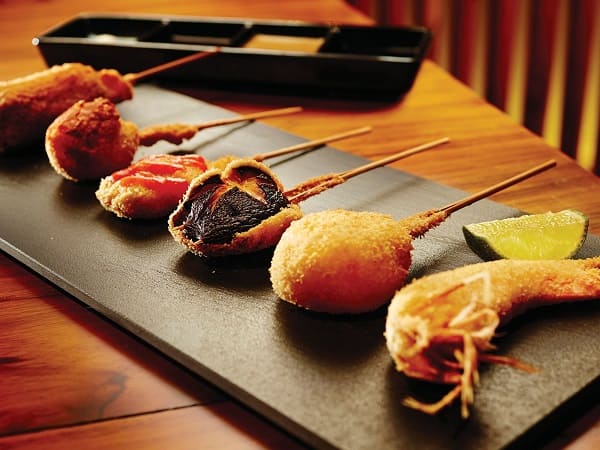
Perhaps the biggest turning point for yakitori came during the occupation of Japan by the Allied Forces. The US introduced broilers to the market, leading to cheaper supplies of chicken. This, in turn, allowed for the proliferation of izakayas (casual bars), as people soon realised how well these grilled, juicy morsels paired with beer and other types of alcohol.
Singapore, too, has no shortage of restaurants selling Japanese-style meat skewers. But not all yakitori are created equal; regional differences in ingredients and methods of preparation do exist. At Han, kushikatsu, which are skewers that are deep fried – rather than grilled – are served up, while Tsukune Ichigo specialises in tsukune (chicken meatballs). To add to the diversity, Asai Masashi, head chef of Bincho, grills his chicken, but eschews the use of skewers altogether. We speak to the chefs of the respective establishments to find out more.
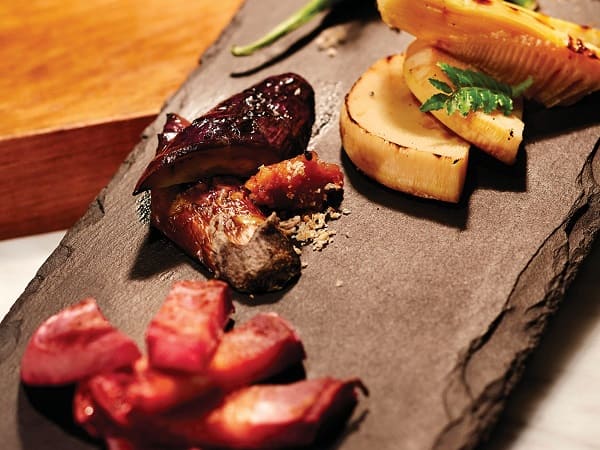
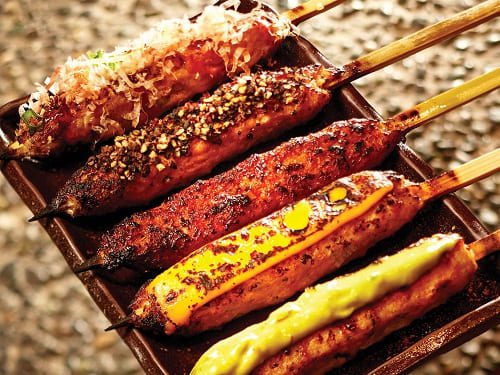
Arakawa Seiichiro executive chef of Han
As a chef, Seiichiro has a long and illustrious history. He started his career in a ryotei (luxurious traditional Japanese restaurant), and became a master not just in preparing classical Japanese cuisine, but also sushi. He eventually found himself at the much-lauded Abon, a kushikatsu restaurant in Osaka. In 2004, he relocated to Singapore to work, and became Han’s executive chef in 2011.
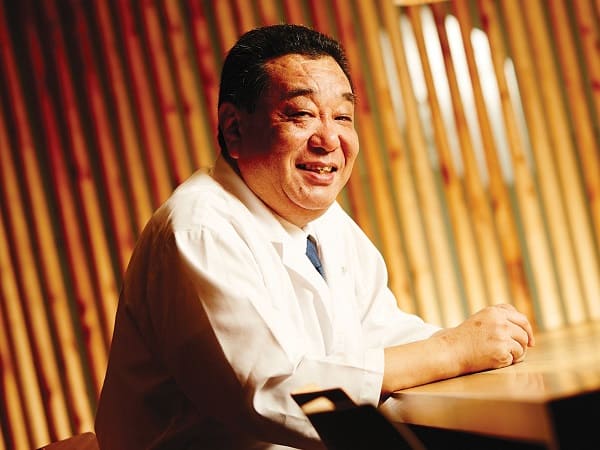
What exactly is kushikatsu?
It refers to a variety of skewered ingredients that are deep-fried, rather than grilled. This style of skewers has its origins in Osaka. Not many people know this, but it takes a skilled chef to prepare kushikatsu; he needs to be extremely knowledgeable and well-versed with the range of ingredients used. The various types of meat, vegetables, and mushrooms require different cooking temperatures and times. I like to skewer the ingredients myself, as this allows me to better gauge their freshness.
So a chef who’s well-versed in preparing tempura won’t necessarily know how to prepare kushikatsu?
Exactly. These are two entirely different things altogether. For one, we use breadcrumbs in kushikatsu, which is not the same as tempura batter. The oil used is also different. At Han, we use the same breadcrumbs and pork lard as Abon in Osaka, and we have to import these from Tokyo and Holland respectively. The reason I use 100 percent pork lard is because it lasts longer than vegetable oil and, because it doesn’t have much of a smell to it, it won’t interfere with the natural taste of the ingredients.
We noticed that as you prepare the skewers, you twirl the skewers quickly, rather than shake them off to get rid of excess oil. Why?
Again, this is something I picked up from my time in Abon. Not all kushikatsu chefs employ this method. Twirling gets rid of more oil, so the skewer won’t feel so stodgy. That means, our customers can enjoy their food without feeling ill from having too much oil. I also prepare the skewers one by one, rather than a few at a go. There are two reasons why I do this. First, different ingredients require different temperatures and preparation time. But more important is the fact that kushikatsu must be enjoyed piping hot.
What drinks are kushikatsu usually paired with?
In Japan, most people enjoy their skewers with beer. But I see an increasing number of people pairing it with wines as well. When I’m behind the counter, I’d pay attention to the drink the customer has ordered – this allows me to customise his skewers accordingly. For instance, if the customer has ordered a red wine, I’d prepare a beef or pork skewer.
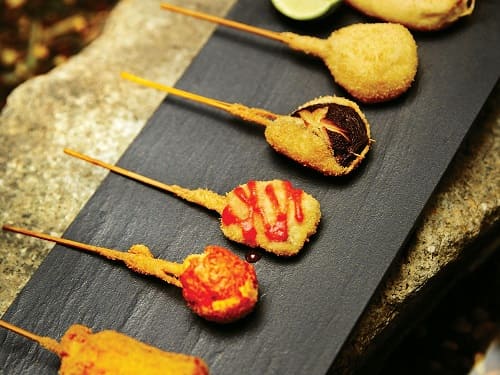
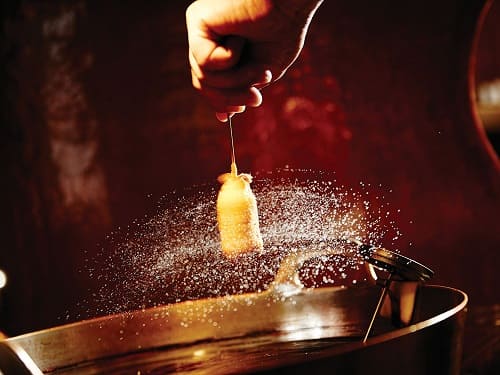
Han
331 North Bridge Road, #01-04 Odeon Towers, Tel: 6336 2466
Asai Masashi head chef of Bincho
Had things turned out differently, Masashi might have become a French chef after graduating from a prestigious cooking school in Japan. He had a change of heart, but the sense of adventure and a desire to do things that are out of the ordinary never left him. He mastered the basics of Japanese cuisine after working in a Japanese restaurant for 10 years, then worked in a fusion restaurant. He had a short stint in the US but, because of 9/11, found it hard to secure a visa to work there long term. Wanting to improve his command of English, he jumped at the opportunity to work in Bincho in Singapore.
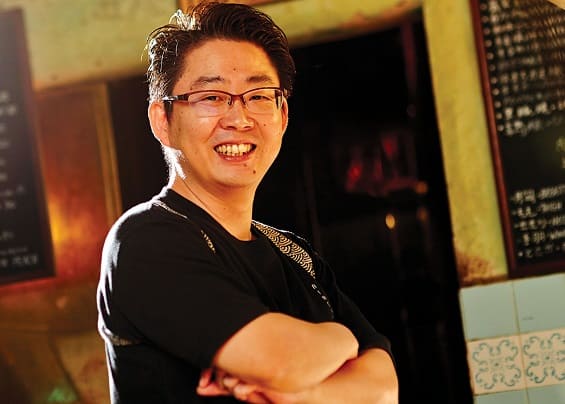
The grilled meat at Bincho is not served on skewers. Why?
When chicken meat is “squashed” onto skewers, a lot of its juices are lost during the grilling process, so it can be quite dry. I prefer to grill the chicken as a whole so it’s crisp on the outside and juicy on the inside. Is there a reason why you like pairing your grilled chicken with condiments like mushroom salt, Japanese mustard, and yuzukosho (as paste made with chilli peppers, yuzu peel, and salt)? Traditionally, Japanese like to eat their grilled chicken with shio (salt), but I like experimenting with condiments so my customers can enjoy a range of interesting flavours. You can call it a hobby, I suppose!
What, to you, is good yakitori?
On the surface, yakitori seems like a very simple dish. But you have to deal with the ingredients in a way that respects their integrity. Breast meat, for instance, is difficult to get just right. When junior chefs first start cooking it, it will usually turn out too raw or too dry. Preparing breast meat well requires a lot of trial-and-error. A lot of chefs also don’t seem to understand the importance of using fresh chicken. When I visit a yakitori restaurant for the first time, I make it a point to order the simplest dish – yakitori paired with salt. I can tell, just by smelling it, whether the chicken used is fresh. Where the yakitori standard in Singapore’s concerned, I think there’s some room for improvement.
What other ingredients do you enjoy working with?
I also love working with vegetables. At Bincho, we try to import seasonal vegetables and seafood from Japan. Again, vegetables are not exactly easy to work with. After grilling, it has to be crunchy on the inside. I’m actually pretty open-minded about what we prepare here. I’m happy so long as our customers enjoy their experience dining with us.
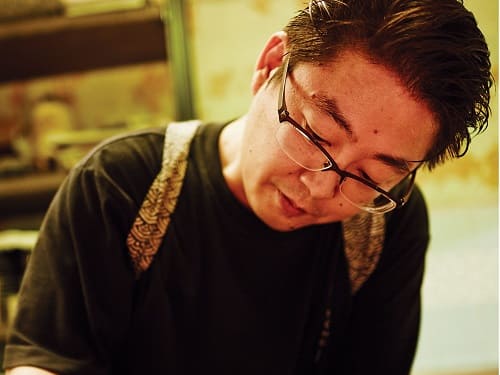
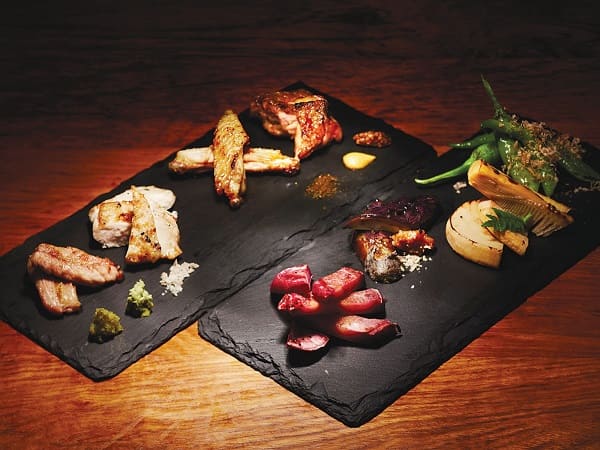
BINCHO
78 Moh Guan Terrace, #01-19, Singapore 162078
Motoi Kentaro yakitori chef of Tsukune Ichigo
For Japanese expats in the know, Tsukune Ichigo is the place to head to for authentic tsukune, or chicken meatballs. What most people don’t know is that Kentaro never started out his career as a chef. In a former life, he was in the business of renting out karaoke machines. However, he’d always had strong artistic inclinations and wanted to set up the restaurant as a means of showcasing his pottery, calligraphy and wood carvings, and the idea for Tsukune Ichigo was born.
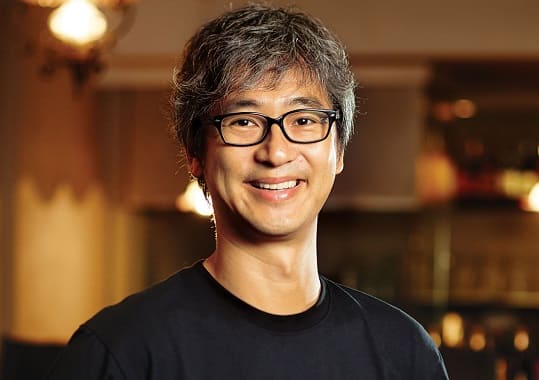
How exactly did you go from renting karaoke machines to becoming a yakitori chef?
I had a friend running a yakitori restaurant in Kuala Lumpur, so I headed there about nine years ago to learn the trade from a yakitori master. Six months later, I opened Tsukune Ichigo. I think learning how to make good tsukune was the most difficult part of the process, as I’d already had a good idea of how I wanted the restaurant to look and feel.
Why did you choose to specialise in tsukune?
When I opened the restaurant nine years ago, there was no other restaurant specialising in it. And I like working with chicken meatballs because it’s so versatile; the texture can differ greatly depending on how much soft bone and fat is in the paste. This is, I think, the biggest difference between working with chicken meatballs and regular chicken.
I also like that the versatility of tsukune extends to its variety of toppings and condiments as well; you can pair it with pepper, avocado mayonnaise, cheese, and more. We offer 15 different kinds of condiments here. Another reason why I wanted to specialise in tsukune is because it’s a food that’s comforting and familiar to the Japanese.
You stock a wide range of sake and shochu in your restaurant. Do you have intentions to do food and alcohol pairings in the future?
I wish I could do it as a formal event, but right now, I have my hands full. However, I’m always happy to make recommendations should my customers ask.
What do define as good yakitori?
The freshness of the chicken definitely takes top priority. Although we use chicken paste here, I don’t believe in compromising on quality.
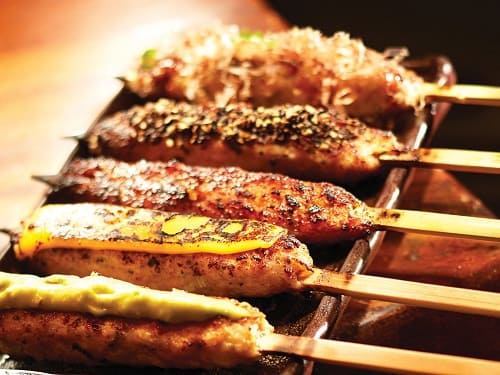
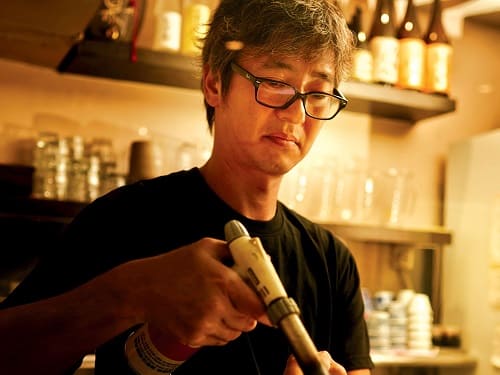
Tsukune Ichigo
339 River Valley Road, Tel: 6736 1340
PHOTOGRAPHY: RAYMOND TOH/VINEYARD PRODUCTION
TEXT: DENISE LI







